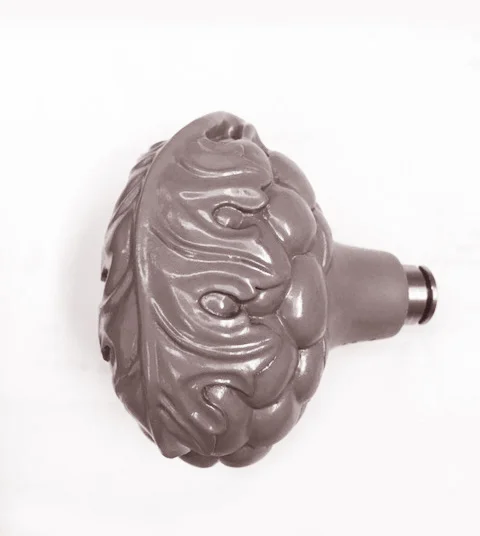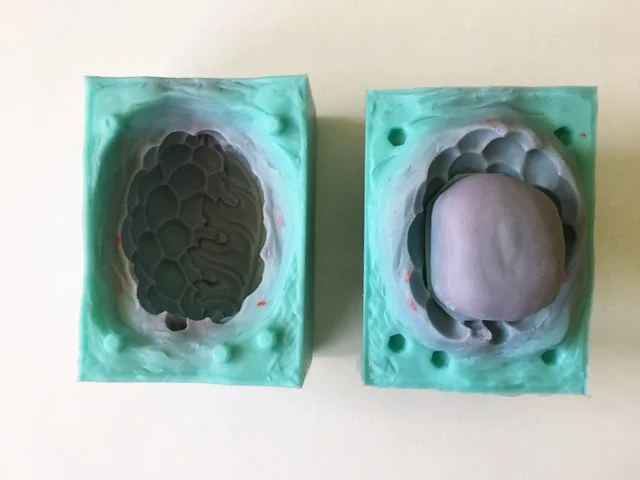The grapevine door knob continues to evolve.
It started out as a pencil sketch and then was “fleshed out” in a series of perspective drawings so that its scale and appearance could be assessed. Once all the angles were mapped out Martin began carving the pattern in basswood, which as any wood carver knows is an easy to carve dense soft wood, perfect for carving fine detail and perfect for pattern making as it is a somewhat bland wood with almost no grain or color. The only real drawback to basswood comes from its lack of color which makes imperfections difficult to spot, so Martin sprays his patterns with grey primer thereby rendering them visible.
Once perfected, two rubber molds are created, one for the body of the door knob and one for the stem of the knob. Each mold is made in 2 halves that can be pulled apart after the wax has been poured into the cavity of the mold. The 2 halves of the mold are keyed to each other by creating a male and female rubber junction, that way the mold will continue to align properly over a long period of use.
The mold is then used to create a wax facsimile of the pattern. There are a large number of waxes to choose from and their pouring temperature, cooling time, density and pliancy are all factors that play a role in deciding which will work best for a given piece. The red wax shown here is a softer more pliant wax that has a low meting temperature and works well for gravity pouring but is less suited to molds where the wax is to be injected.
Red wax facsimile of wood pattern
The next stage will be to shell the wax and eventually we will invest the shell with molten bronze, so stay tuned for the next installment.



